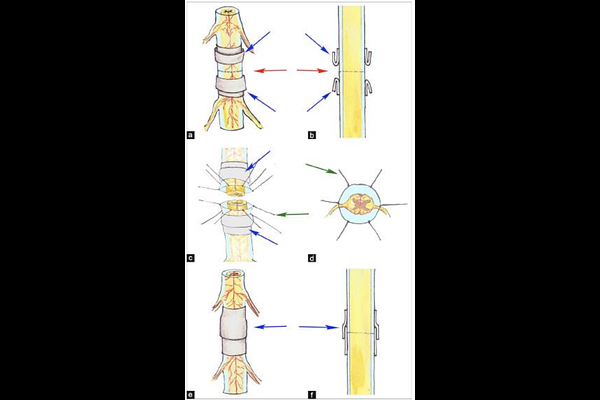A phrenic-sparing cephalic reanastomosis model: Acute effects and implications

A phrenic-sparing cephalic reanastomosis model: Acute effects and implications
Lebenstein-Gumovski, M.; Zharchenko, A.; Rasueva, T.; Sobol, E.; Petrov, P.; Eskov, K.
AbstractBackground: Head transplantation (HT), also known as cephalosomatic anastomosis (CSA), is a surgical procedure proposed as a potential method to extend lifespan in cases of terminal bodily failure. CSA requires a thorough evaluation of each step using appropriate experimental animal models, with pigs being particularly suitable due to their anatomical and physiological similarities to humans. The critical challenge in HT is spinal cold fusion, which current research suggests can be facilitated using fusogens. To refine the technical aspects of the procedure, we conducted head replantation in a pig model using polyethylene glycol (PEG)-chitosan conjugate (Neuro-PEG). In this article, we evaluate the technical aspects of this procedure, the rate of recovery of ventilation after spinal cord fusion, and phrenic sparing in a model of autologous decapitation-reanastomosis in a single swine. Methods: A Hungarian Mangalica pig was submitted to surgical separation of the head while maintaining blood flow to the brain through cannulation of the primary cervical vessels. After cephalic separation, the head was reconnected, and the cervical spinal cord fused. Results: The animal was weaned from ventilation after 5 h and kept on spontaneous breathing. The animal regained full consciousness, demonstrated early signs of sensory recovery, and restored brain functions. Conclusion: Pending further confirmatory studies, a phrenic-sparing cephalic reanastomosis with spinal cord fusion using fusogens has clarified the technical aspects of the procedure. A head replantation model with complete vascular cannulation was developed, resulting in the recovery of spontaneous breathing and brain functions.